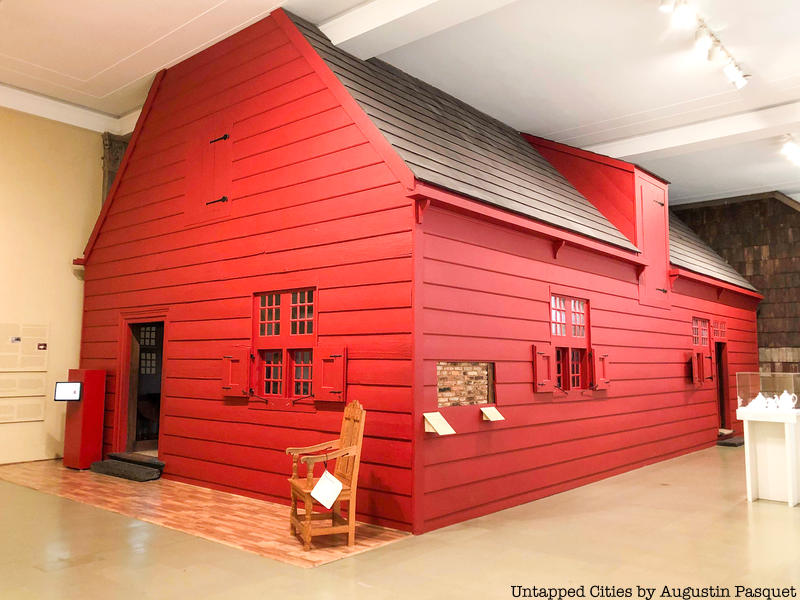2. The Jans Martense Schenck House, 1676

The Jans Martense Schenck House was originally located in the town of Flatlands, one of the six rural towns that would one day become the borough of Brooklyn. The entire area was under Dutch rule until 1664, and Flatlands was first known as New Amersfoort, named after the Amersfoort in the Netherlands. Before that, the area was home to the Canarsie tribe, but conflict and disease all but eradicated the local Native American population by the 1680s.
The house was built on land Jan Martense Schenck purchased in 1675, and its design is traditional to ancient Northern European methods of construction, contrasting with the boxlike houses popular in England at the time. The house’s original design consisted of two rooms, with a central chimney and a framework composed of one dozen “H-bents,” visible from inside the house. The building actually underwent many changes throughout its lifetime, including the addition of a kitchen wing and a porch, but when The Brooklyn Museum chose to save and dismantle the house in 1952, it decided to return the house to its early Dutch colonial structure. The house now resides inside the Museum, reconstructed and interpreted into what it’s believed to have looked like in the 1730s. It stands next to the house of Nicholas Schenck, the grandson of Jan Martense, which we will discuss further on in this article.
The Brooklyn Museum is located at 200 Eastern Parkway.





